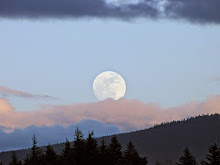On September 2, 1945, Japan formally surrendered aboard the battleship U.S.S. Missouri in Tokyo Bay. President Truman declared this to be V-J Day.
Among the U.S. troops entering Japan during the occupation was my father, Lt. C. M. Williams, who arrived in Tokyo Bay on September 8, 1945. He and Lt. J. Flavin were the only veteran combat pilots in Japan during the first months of the occupation.* Top U. S. military brass said a veteran battle pilot had to lead the three ship B-25 formation that flew around the perimeter of Japan every day to show force to the Chinese Communists who were taking over China at the time. So, C. M. Williams and J. Flavin alternated leading the daily B-25 formation. But, (in line with sometimes normal top military brass stupidity) they were not allowed to carry ammunition in the B-25's guns!
Here's some footage of the daily B-25 flight around the coast of Japan. My father, the pilot in the first part of the clip, is taking the video of the Japanese coast in the last part of the clip and narrating.
*The other Pacific theater pilots had accumulated enough longevity points to be sent back to the States.
Subscribe to:
Post Comments (Atom)

4 comments:
Any idea where your dad got his training?
My dad was a B-25 PI in Oklahoma.
.
TMI,
My dad says he trained at Mather Field, Sacramento, California. But, he also did further training in South Carolina before being sent overseas.
He also says the B-25 in the video is a C or D model, not like the J model he flew in Pacific combat. The J model had a lot of armor plating and couldn't stay in the air on one engine. The C and D models were lighter and could. Also, the J model had the turret moved up over the front wheels, where the C and D models had it further back as seen in the video.
Did your dad fly in the Pacific theater?
That's great stuff.
My own dad served in the Army Air Corps in the Pacific Theater, coming in to the service as a pilot trainee but in late '44 the pilot training program was cut way back, with about half the fellas being sent back to the infantry and my dad being trained as a gunner, initially in the B-17 and later in the B-29. He was based on a little island in the Marianas called Tinian. He flew quite a few missions, big raids over Tokyo. Lost a buddy whose aircraft was shot down after the pilot neglected to drop chaff to disrupt the radar guided anti-aircraft guns. Milk run he thought. Didn't need to bother with the chaff. Dad came home packed into a slow steam ship eight men one atop the other - never would travel by ship again. Heck of a guy.
Thanks for sharing about your dad, JN. These guys are heroes! And flying raids over Tokyo was very dangerous.
My dad saw some of the defensive antiaircraft weapons when he was in Japan. He tells of first arriving in Japan and that MacArthur had ordered that all Japanese antiaircraft and artillery have the barrels pointed straight up and the breech-locks removed. The order was carried out completely after some of those in charge of the weapons where this did not happen were summarily executed.
http://www.ibiblio.org/pha/war.term/093_03.html (see page 87)
None of the men who served with him (first combat mission March 7, 1945) in the Pacific in the 13th Air Force was hurt except one navigator who got his leg fractured when his plane had to ditch. So, my dad didn't have the trauma of losing someone he was close to.
Though my dad tells an interesting story. Since none of the aircraft in his missions got shot up, he thought there was no one shooting at them. The CO of their squadron challenged him to take off his sunglasses on the next mission. With sunglasses off, Dad saw lots of tracer fire. He says he immediately put his sunglasses back on. :-)
My dad also had the long trip home by ship, but had a much better ride. He said he always felt bad when walking by the stacked bunks of the other guys. He was given his own small room because he was an officer.
Post a Comment